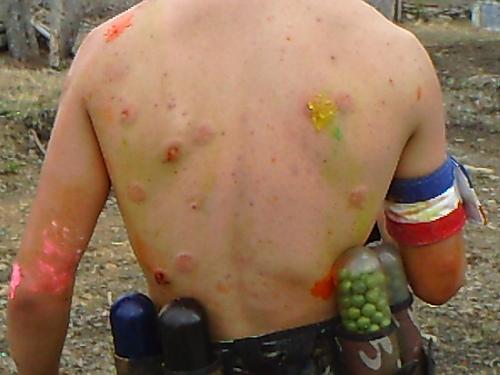It doesn’t matter if you have been playing paintball for twenty years or you are just starting out, there is a good chance that you are going to get shot from time to time. In fact, paintball is a pretty extreme and intense sport. It can also get extremely competitive at times. Unfortunately, this means that during your paintball adventure, you are going to experience welts, bruises, bumps, pain, and even sore muscles. Just about 90% of the players out there consider the rewards of the game well worth the risks. Most players even welcome these risks, because it boosts the adrenaline and excitement. Whatever the situation is, it is imperative to know to treat and prevent these injuries and that is what you are going to learn below.
Equipping Yourself With The Right Safety Gear
When it comes to the prevention of these injuries, the first step is without a doubt to invest in high quality protective gear. Make sure that you have a regulation facemask, goggles, and a helmet. These items are going to protect the face, mouth, and head areas. As far as the rest of the body goes, there are other protective items that you can invest in. Most players tend to wear thicker clothing, which might not be ideal for you because thicker clothing can restrict movement. Long sleeved shirts, boots, and protective gloves are almost always a must, as they can prevent a lot of injuries. Some players will even go as far as padding sensitive areas of the body.
Take Advantage Of Cold Compresses
No matter how many safety precautions you take, there are going to be times when you still get bumps, bruises, welts, and scrapes. As far as treatment for paintball welts goes, there is a variety of different things that you can do. When you first get shot if you look at the area you probably won’t even notice a welt or bruise, but this doesn’t mean that one won’t appear later. Just keep an eye on the area.When you notice a welt or bruise, you want to immediately apply a cold compress. Cold compresses can easily be made at home if you don’t have immediate access to a first aid kit.
All you have to do is place some ice in a plastic bag and put it on the affected area. Or, you can place some ice in a towel or washcloth and apply it to the affected area.
Utilizing Heat Compresses
Once you have applied the cold compresses to the affected area for a good 12 to 24 hours, it is usually a good idea to move onto warm compresses. If you have a heating pad lying around, this will make an excellent heat compress. However, if you don’t have one, this doesn’t mean you have to go out and purchase one. You can easily make a heat compress by dipping your towel or washcloth in warm water and applying it to the affected area. Warm compresses are necessary after applying cold compresses because they improve the circulation around the affected area. This can reduce discoloration and swelling.

